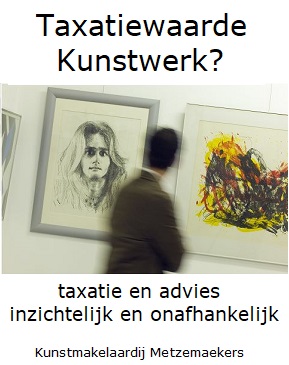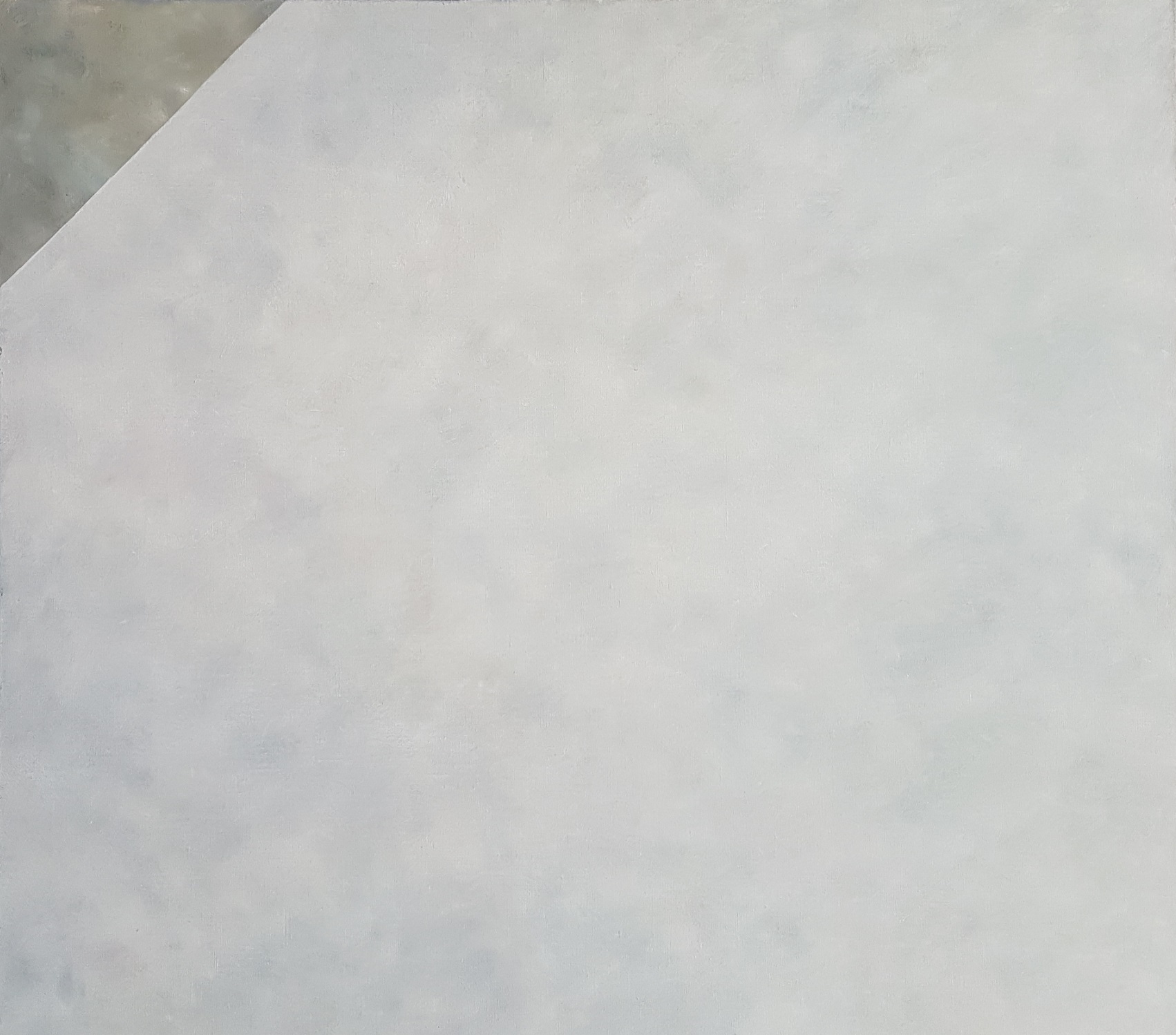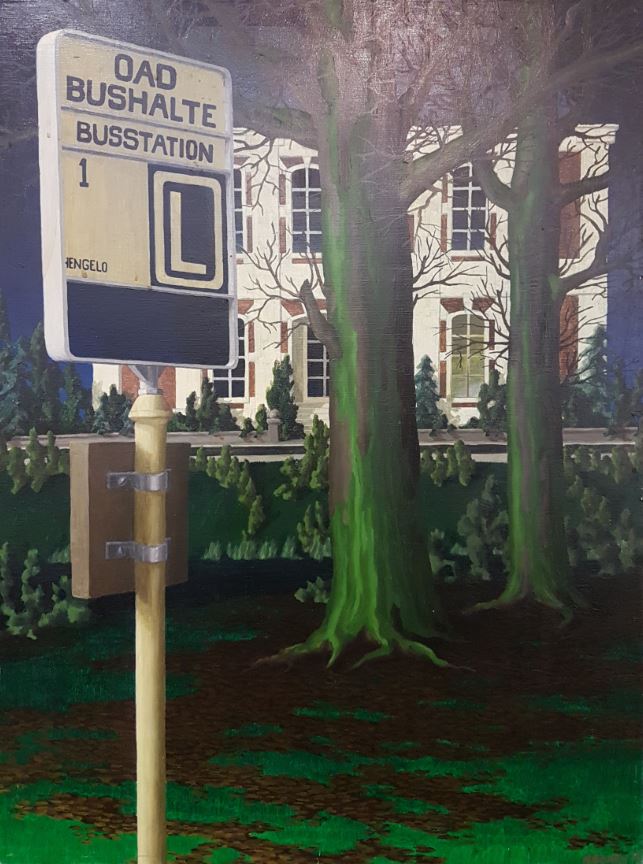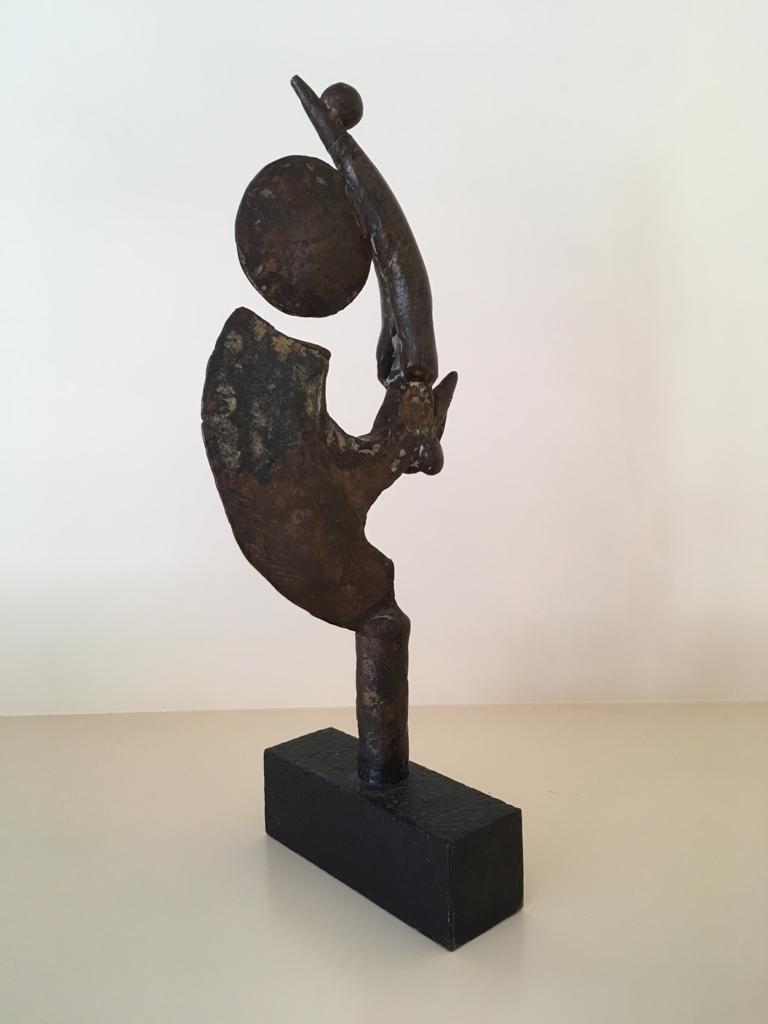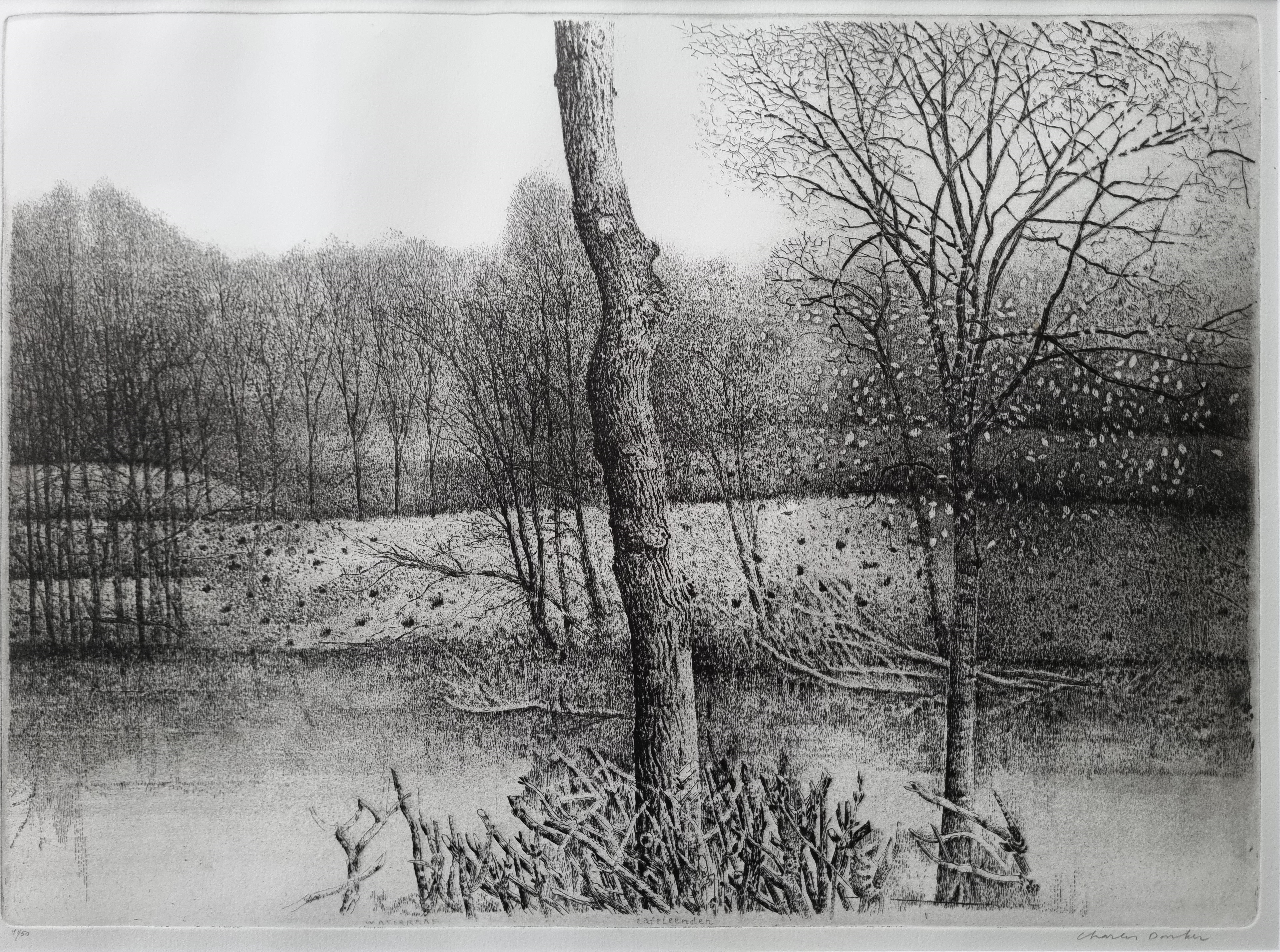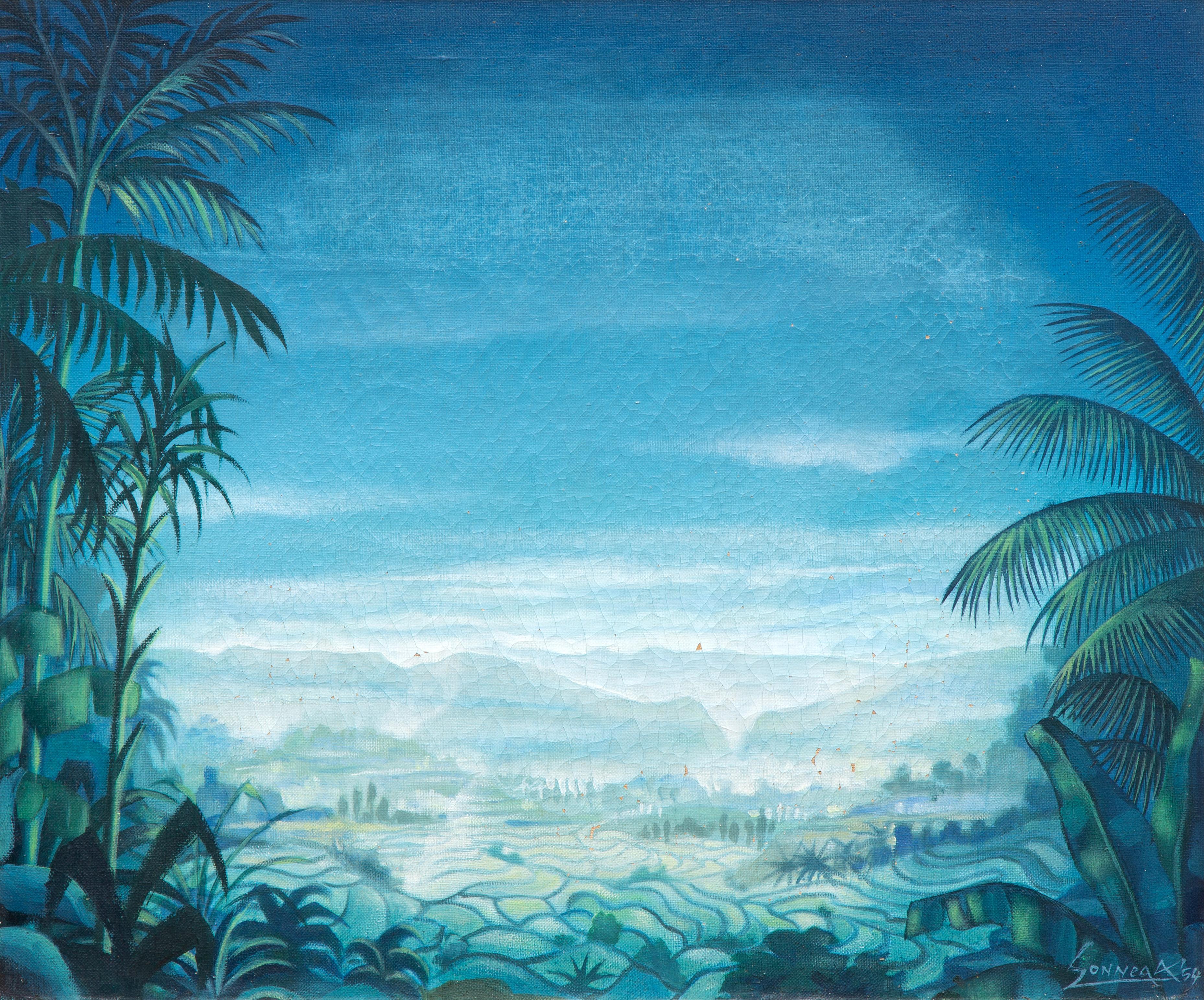
Beschrijving
Signed and dated 'Sonnega '54' (lower right), and annotated 'Voor Jan de Bas 1-1-1970 / R de Bas' (on the reverse).
Provenance: -Collection Pieter de Bas (1909-1979) Mr de Bas was head of the MULO school and acting head of the HBS school in Medan. Thence by descent to the present owner. Exhibited: -Hotel de Boer, Medan 1954, where acquired by the first owner.
The light I observed everywhere was of a special quality, fluorescent blue, shone from nowhere but radiated from every point, oddly with great depth and intensity. The light in an entirely different dimension came from nowhere and went nowhere shimmering with the glow of a bright blue jewel. The most important thing I discovered was of being omnipresent and able to understand everything at the same time, yes I could fathom creation completely.
Auke Sonnega, born March 9, 1910 in Leeuwarden, known as the painter, primarily of young Balinese men and women.
Originally raised in the reformed denomination, the parents of Auke apparently practised theosophy and their children, including Auke were taught these principles. The talent for drawing revealed itself at an early stage which in 1926 lead to a 4-year study of textile design at the Academy for Art and Craft in Amsterdam.
He completed the academy in 1930 and worked in a carpet factory in Twente until 1934 and then followed in his sister Aafje’s footsteps leaving the Netherlands to go to the Dutch East Indies where in 1935 he started working as a graphic designer with an advertising bureau in Batavia. He was able to travel through Java and Bali on the motorbike that he brought with him from Europe, and was paid for his travelogue, enhanced with his own photo’s which appeared in several Dutch newspapers and magazines.
In the 1930’s two Europeans, Walter Spies and Rudolf Bonnet introduced western themes and techniques on Bali (among others, this portrait). This, combined with the traditional art of the indigenous population, provided a vibrant and colourful style which was a huge inspiration to the work of Auke Sonnega. Although his early work still clearly show his background as a textile worker, in his later years Sonnega’s works are more expressive and gradually his subjects became more abstract.
After the outbreak of WW II Sonnega initially managed to evade confinement in a concentration camp, mainly due to his friendship with Takashi Kono, a high-ranking Japanese officer who was also an artist. Later on, when Kono was transferred, Sonnega was imprisoned at a work-kamp in Ngawi. But even there, he was privileged and able to continue to draw and sometimes even paint, with limited resources. At one point he worked briefly for the Japanese Department of Propaganda on the Koningsplein (Kings’ Square) in Batavia.
After the Japanese capitulation, Sonnega returned to work. He quickly organized his first post-war exhibition, befriended Arie Smit and acquainted himself with Ries Mulder, the influential art education tutor at the Academy in Bandoeng. Sonnega’s work was highly appreciated. Soekarno acquired several of his works and artists such as Dullah and Lee Man Fong visited his exhibition in 1951 in Jakarta.
A further important influence on the life of Sonnega, was the meeting in August 1950 in Indonesia with the Moroccan mystic, Husein Rofé, who changed his life spiritually. Auke wrote about a ‘latihan’, a spiritual exercise conducted under the direction of Rofé which in Auke’s case lead to a change of consciousness. In the opening citation (in italics) above, he describes part of that experience.
The blue landscape of Sonnega, possibly the sawa’s in the area of Brastagi and Bindeh near Medan, would seem to represent particularly, Sonnega’s ‘fluorescent blue light’ depicted experience.
Sources: Auke Sonnega, ‘Een futiliteit in het grote bestaan, een ontmoeting op Bali met Husein Rofé, de man uit Tanger in 1950, Auke Sonnega, 10 december 1959 (internet). A futility in the greater life, a meeting on Bali with Husein Rofé, the man from Tangiers in 1950. (internet). Didier Hamel, ‘Auke Sonnega, artist of the enchanting tropics’, 2011 Jakarta.
Details
- Databanknummer:
- 85507
- Lotnummer:
- -
- Advertentietype
- Archief
- Instelling:
- Venduehuis Den Haag
- Veilingdatum:
- -
- Veilingnummer:
- -
- Stad
- -
- Limietprijs
- -
- Aankoopprijs
- -
- Verkoopprijs
- -
- Hamerprijs
- -
- Status
- Verkocht
Technische details
- Kunstvorm:
- Schilder- en Tekenkunst
- Technieken:
- Olieverf
- Dragers:
- Doek
- Lengte:
- 50.5 cm
- Breedte:
- 60.5 cm
- Hoogte:
- -
- Oplage:
- -
Beschrijving
Signed and dated 'Sonnega '54' (lower right), and annotated 'Voor Jan de Bas 1-1-1970 / R de Bas' (on the reverse).
Provenance: -Collection Pieter de Bas (1909-1979) Mr de Bas was head of the MULO school and acting head of the HBS school in Medan. Thence by descent to the present owner. Exhibited: -Hotel de Boer, Medan 1954, where acquired by the first owner.
The light I observed everywhere was of a special quality, fluorescent blue, shone from nowhere but radiated from every point, oddly with great depth and intensity. The light in an entirely different dimension came from nowhere and went nowhere shimmering with the glow of a bright blue jewel. The most important thing I discovered was of being omnipresent and able to understand everything at the same time, yes I could fathom creation completely.
Auke Sonnega, born March 9, 1910 in Leeuwarden, known as the painter, primarily of young Balinese men and women.
Originally raised in the reformed denomination, the parents of Auke apparently practised theosophy and their children, including Auke were taught these principles. The talent for drawing revealed itself at an early stage which in 1926 lead to a 4-year study of textile design at the Academy for Art and Craft in Amsterdam.
He completed the academy in 1930 and worked in a carpet factory in Twente until 1934 and then followed in his sister Aafje’s footsteps leaving the Netherlands to go to the Dutch East Indies where in 1935 he started working as a graphic designer with an advertising bureau in Batavia. He was able to travel through Java and Bali on the motorbike that he brought with him from Europe, and was paid for his travelogue, enhanced with his own photo’s which appeared in several Dutch newspapers and magazines.
In the 1930’s two Europeans, Walter Spies and Rudolf Bonnet introduced western themes and techniques on Bali (among others, this portrait). This, combined with the traditional art of the indigenous population, provided a vibrant and colourful style which was a huge inspiration to the work of Auke Sonnega. Although his early work still clearly show his background as a textile worker, in his later years Sonnega’s works are more expressive and gradually his subjects became more abstract.
After the outbreak of WW II Sonnega initially managed to evade confinement in a concentration camp, mainly due to his friendship with Takashi Kono, a high-ranking Japanese officer who was also an artist. Later on, when Kono was transferred, Sonnega was imprisoned at a work-kamp in Ngawi. But even there, he was privileged and able to continue to draw and sometimes even paint, with limited resources. At one point he worked briefly for the Japanese Department of Propaganda on the Koningsplein (Kings’ Square) in Batavia.
After the Japanese capitulation, Sonnega returned to work. He quickly organized his first post-war exhibition, befriended Arie Smit and acquainted himself with Ries Mulder, the influential art education tutor at the Academy in Bandoeng. Sonnega’s work was highly appreciated. Soekarno acquired several of his works and artists such as Dullah and Lee Man Fong visited his exhibition in 1951 in Jakarta.
A further important influence on the life of Sonnega, was the meeting in August 1950 in Indonesia with the Moroccan mystic, Husein Rofé, who changed his life spiritually. Auke wrote about a ‘latihan’, a spiritual exercise conducted under the direction of Rofé which in Auke’s case lead to a change of consciousness. In the opening citation (in italics) above, he describes part of that experience.
The blue landscape of Sonnega, possibly the sawa’s in the area of Brastagi and Bindeh near Medan, would seem to represent particularly, Sonnega’s ‘fluorescent blue light’ depicted experience.
Sources: Auke Sonnega, ‘Een futiliteit in het grote bestaan, een ontmoeting op Bali met Husein Rofé, de man uit Tanger in 1950, Auke Sonnega, 10 december 1959 (internet). A futility in the greater life, a meeting on Bali with Husein Rofé, the man from Tangiers in 1950. (internet). Didier Hamel, ‘Auke Sonnega, artist of the enchanting tropics’, 2011 Jakarta.
Aangeboden kunst
Een selectie uit ons kunstaanbod
Iedere donderdag en vrijdag geopend van 13.00 tot 17.00 uur
Andere dagen na afspraak
